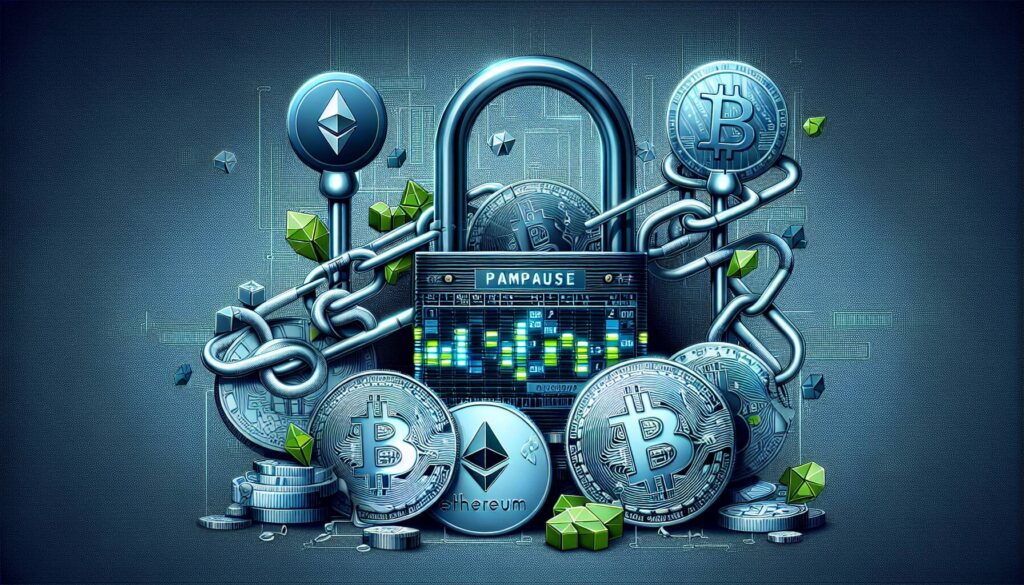The cryptocurrency landscape is witnessing a significant shift as the native token of the oracle network Chainlink (LINK) struggles amidst a broader market downturn. Following a promising announcement of a partnership with Japan’s SBI Group, LINK has seen a decline, dropping to $24.4—a decrease of over 6% within a 24-hour span. This downward trend marks a notable contrast to its recent year-to-date peak of over $27 reached just last Friday.
Despite the positive developments, including SBI Group’s commitment to leverage Chainlink’s technology for tokenized assets and stablecoin solutions, investor sentiment appears cautious. The partnership aims to enhance blockchain interoperability by utilizing Chainlink’s Cross-Chain Interoperability Protocol (CCIP), facilitating transactions across various blockchains while ensuring regulatory compliance. Other ambitious plans include testing tokenized funds and developing innovative foreign exchange solutions.
“The firms will also test tokenized funds by bringing net asset value data on-chain and explore payment-versus-payment settlement for foreign exchange and cross-border transactions.”
However, the technical analysis paints a concerning picture for LINK, indicating critical resistance at $26.61 and support emerging at $24.37. The sustained bearish momentum is characterized by successive lower peaks, pointing to a market that is consolidating, albeit with declining trading volumes. Analysts note that extraordinary trading volume during peak volatility highlights the ongoing uncertainty, exceeding the 24-hour average significantly during this tumultuous period.
As Chainlink and SBI Group continue their collaboration, the industry watches closely, weighing potential opportunities against the backdrop of current market dynamics. The intersection of traditional finance and blockchain technology remains a hot topic, particularly in the Asia-Pacific region, where expansion is set to unfold.

Chainlink (LINK) Market Update and Partnership Insights
Key Points:
- Price Decline: LINK has dropped to $24.4, a decline of over 6% over the past 24 hours.
- Market Movement: This decline occurs despite a recent partnership with SBI Group, highlighting the broader bearish trend in the crypto market.
- Partnership with SBI Group: Chainlink is collaborating with Japan’s SBI Group to develop tokenized assets and stablecoin solutions.
- Cross-Chain Interoperability: SBI will utilize Chainlink’s Cross-Chain Interoperability Protocol (CCIP) for blockchain transactions, indicating a push towards greater blockchain integration.
- Tokenized Funds Testing: The partnership includes testing tokenized funds and on-chain net asset value data verification.
- Historical Collaboration: This partnership builds on previous work under Singapore’s Project Guardian, which explored blockchain’s financial applications.
- Technical Indicators:
- Resistance level identified at $26.61, with decreased activity leading to reversal.
- Critical support level at $24.37, indicating potential buying interest.
- Bearish momentum suggested by systematic lower peak formations.
- Spike in trading volume at 7,850,571 units during peak volatility, surpassing the 24-hour average.
This information could impact readers by highlighting the volatility of crypto markets and the influence of strategic partnerships on token performance.
Chainlink’s LINK: Navigating Challenges Amid Strategic Partnerships
The recent news surrounding Chainlink’s native token, LINK, showcases a complex landscape influenced by both internal development and external market conditions. Despite a strategic alliance with SBI Group, a heavyweight in Japan’s financial sector, LINK experienced a notable decline alongside the broader cryptocurrency market. This contrasting dynamic underscores the challenges that even promising partnerships can face in a volatile environment.
While the partnership with SBI Group is positioned as a strong move towards advancing tokenized assets and stablecoin solutions, the immediate market response seems dampened. Comparatively, other cryptocurrencies have fared better during similar collaborations, highlighting Chainlink’s vulnerabilities. The ability to implement innovative technological frameworks like the Cross-Chain Interoperability Protocol (CCIP) could bolster user confidence but has yet to translate into price stability or growth for LINK.
The opportunity presented through this partnership could greatly benefit institutions looking to explore blockchain and tokenized financial solutions—especially within the Asia-Pacific arena. However, for retail investors or smaller entities, the current bearish trend might instill hesitation, deterring investment when they need assurance in market upswing. The notable sharp drops from recent highs suggest a precarious position that could deter potential new entrants.
Ultimately, while the collaboration with SBI Group may present long-term advantages, such as enhanced credibility and sophisticated technology implementations, the immediate market response reveals significant disadvantages that could affect both investor sentiment and price action for LINK. As patterns of lower peaks continue to emerge, stakeholders must tread carefully, balancing their optimism with the realities of a fluctuating market landscape.
















